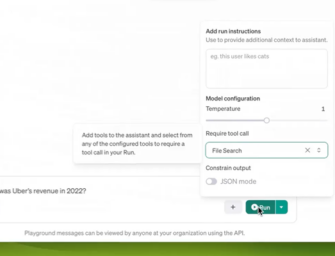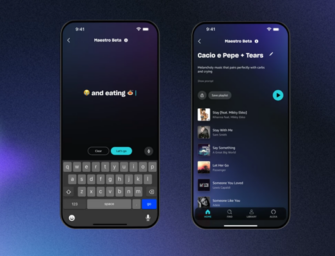Amazon Lays Out Alexa’s Future, Adds 31 New Features for Voice App Developers at Alexa Live
 Amazon barraged voice app developers with 31 new and updated features at the Alexa Live virtual conference on Wednesday. The announcements included both minor updates and some new options that may reshape the industry for hundreds of thousands of Alexa skill developers. The sheer breadth of updates can be hard to absorb all at once, much like when the company showcased 16 new devices at its hardware event last year. Though every update may matter as more people create apps for the voice assistant, we’ve picked out a few of the most notable announcements from the rapid-fire release. You can also read our line of more in-depth articles covering features revealed at Alexa Live, with more in the series coming soon.
Amazon barraged voice app developers with 31 new and updated features at the Alexa Live virtual conference on Wednesday. The announcements included both minor updates and some new options that may reshape the industry for hundreds of thousands of Alexa skill developers. The sheer breadth of updates can be hard to absorb all at once, much like when the company showcased 16 new devices at its hardware event last year. Though every update may matter as more people create apps for the voice assistant, we’ve picked out a few of the most notable announcements from the rapid-fire release. You can also read our line of more in-depth articles covering features revealed at Alexa Live, with more in the series coming soon.
Device and App Connections
One of the most talked-about new features is Alexa for Apps, which will enable the voice assistant’s mobile app to launch some iOS and Android apps with a vocal request. Though still in development, the feature will connect Alexa’s app to Twitter, TikTok, and other mobile apps, and the voice assistant will use them to answer relevant queries through deep links, shortening the time between a request to Alexa and getting an answer. The feature can’t actually control the app, so asking Alexa to search for #voicebot on Twitter would be the only thing the voice assistant could do until the app is reopened. And the apps it connects to have to be on the same device, meaning a user can’t pull up a mobile app by asking Alexa on a smart speaker. Still, it hints at how Amazon is attempting to grapple with Alexa’s limited presence on mobile devices.
Meanwhile, in almost a reverse of Alexa for Apps, Quick Links bring people to an Alexa skill from another platform. Developers can embed links to their Alexa skill in a mobile app, social media post, digital ad, or website that will offer to enable the voice app on the user’s account. The link is customizable, so developers can have a single click initiate a task that their skill can complete, such as playing a song or beginning a game. While Quick Links is designed for helping discover software, there may be a lot more Alexa-enabled hardware. The new Alexa Connect Kit (ACK) module that incorporates the voice assistant into smart home and Internet of Things devices will cost as little as half of the previous iteration. All of these efforts streamline how Amazon wants people to weave Alexa into their lives. Theoretically, someone could ask Alexa on their smartphone to find a recipe-related hashtag, opening their Twitter app to a tweet about a voice app for managing recipes, including an embedded Quick Link to the Alexa skill, which lists as compatible hardware a smart oven built with the new Alexa Connect Kit.
Humanizing Alexa
Someone could ask Alexa on their smartphone to find a recipe-related hashtag, opening their Twitter app to a tweet about a voice app for managing recipes, including an embedded Quick Link to the Alexa skill, which lists as compatible hardware a smart oven built with the new Alexa Connect Kit.
Many of the updates discussed at Alexa Live had to do with making the voice assistant better at simulating human interaction. The new name-free interaction (NFI) toolkit, for instance, allows Alexa to use context and logic to identify a voice app that someone wants to access, even if they don’t use its precise name. Developers can annotate their Alexa skill with examples of what a potential customer might say when trying to pull up their skill. Relying on those phrases, as well as keywords and previous user history, the voice assistant could infer that someone asking it to get them a ride somewhere is actually asking to open Uber or a taxi skill local to the area they are in at the moment. Even in the beta, some developers say there’s a 15% bump in traffic to their voice app.
These logical leaps complement Alex’s new Skill Resumption feature, which enables Alexa to keep running skills in the background, instead of having to finish each request before moving to the next one. Improving the voice assistant’s “memory” of requests also gives Alexa a chance to be proactive, reminding people about the arrival of a taxi they ordered, for instance. Users can ask Alexa for updates whenever they wish, but Skill Resumption means they don’t have to remember it themselves or set an alarm to let them know.
Making Alexa act more human will also become easier for developers thanks to Alexa Conversations, a feature first teased last year but now in beta. Alexa Conversations enables the AI to apply its algorithms to a developer’s voice app. Instead of developers having to work out every possible conversation that a user may have with Alexa, they just need to provide access to the APIs, and Alexa’s AI will build its own script variations. The feature takes after Gooogle’s popular Dialogflow by giving the AI extra flexibility. The voice assistant will understand what people are asking it even more in some apps thanks to the new deep neural network aspect Amazon is adding to Alexa’s natural language understanding for some apps. Amazon painted a vivid picture of Alexa’s potential for frictionless operation in so many roles in people’s lives at Alexa Live. The company is looking to the Alexa developer community to make that image a reality, judging from how the updates are all built around streamlining and adding flexibility to the creation of Alexa skills.
Follow @voicebotai Follow @erichschwartz
Alexa for Apps Wants to Launch TikTok and Other Apps for You
Alexa’s New Skill Resumption and Name-Free Interaction Simulate Human Memory and Inference Ability








